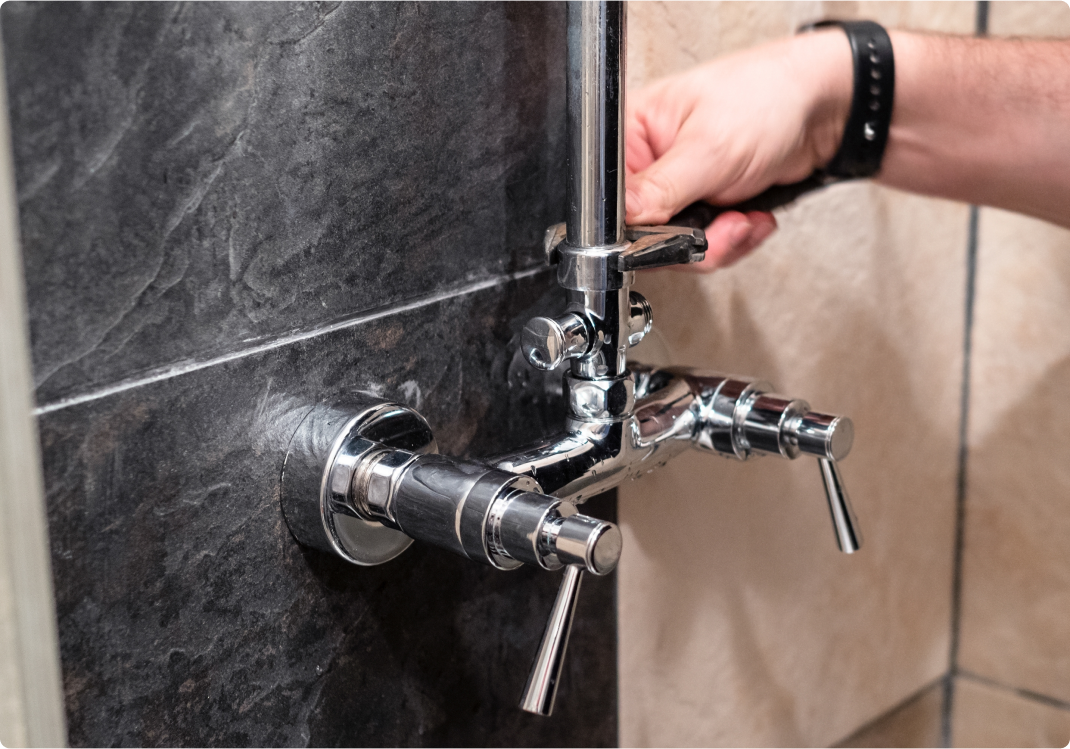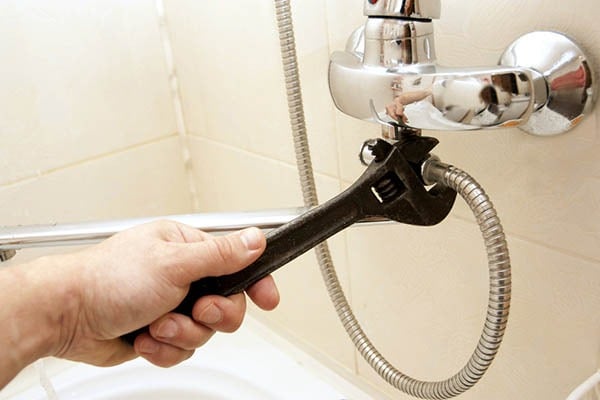What is a Shower Diverter Valve?

Most homes have a shower diverter valve, but do you know what your diverter valve does? The answer depends on where it's located.


Most homes have a shower diverter valve, but do you know what your diverter valve does? The answer depends on where it's located.
So, what is a shower diverter valve exactly? It’s a crucial component in your bathroom’s plumbing system, designed to redirect water flow between different outlets. This simple device allows you to switch effortlessly between your tub faucet and shower head, or between multiple shower heads in more advanced setups.
The primary function of a diverter valve is to control the path of water in your plumbing. When engaged, it redirects water from its default path (usually the tub spout) to an alternative outlet (typically the shower head).
There are two main categories of shower diverter valves:
A tub-to-shower diverter valve makes your bath-to-shower transition as smooth as possible. Here’s a quick rundown of the three common types:
Three-valve diverter
This diverter valve is between the taps of a two-tap faucet. After using the hot and cold faucets to get the desired shower temperature, the diverter handle is turned clockwise to redirect the water flow to the shower head. Turning the handle counterclockwise returns the flow to the tub.
Two-valve diverter
This type of diverter has two L-shaped valves and can be located in the center of a faucet that adjusts water temperature with a single dial or between the taps of a two-tap faucet. After the desired shower temperature is set, turning the handle redirects water from the tub spout to the shower head.
Tee-diverter
This diverter is the part of the tub spout. The diverter handle simply pulls straight up, sending all water from the tub spout to the shower head.
Learn how a protection plan can help with covered faucet and valve breakdowns.

Have multiple shower heads or are you planning to add some? Then you’ll need a shower head diverter valve. These handy valves let you switch between your standard shower head and a hand-held one with ease.
The best part? They’re beginner-friendly, come in various shapes to match your bathroom style, and are easy on the wallet. You can find them at most hardware stores, making shower diverter replacement or installation a manageable DIY project.
Ready to give your shower a spa-inspired makeover? Replacing or installing a diverter valve is pretty straightforward, even for beginners. Here’s how to do it:
Remember, if things get too dicey, there’s no shame in calling in the Pros. Better safe than soggy!
To keep your diverter valve in top shape, a little maintenance goes a long way. Here are some tips to ensure your valve keeps working smoothly:
Is your shower misbehaving? Here are some signs your shower diverter valve might be throwing a tantrum:
If you notice any of these issues, you may want to consider repairing or replacing your diverter valve.
Our home warranty plans cover a whole parade of plumbing predicaments.
With American Home Shield, you’re never alone in facing home repair challenges. From DIY tips and tricks that’ll make you the MacGyver of your neighborhood, to Pros who are just a service request away, we’ve got you covered.
Ready to turn your plumbing worries into a distant memory? Check out our comprehensive plumbing coverage and shop our plans. Because when it comes to home repairs and maintenance, we want you singing in the shower, not crying over your water bill.
AHS assumes no responsibility, and specifically disclaims all liability, for your use of any and all information contained herein.
Have a plan for your home when things don't go according to plan
Shop Home Warranties